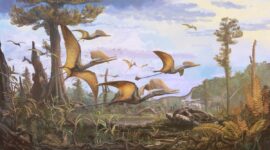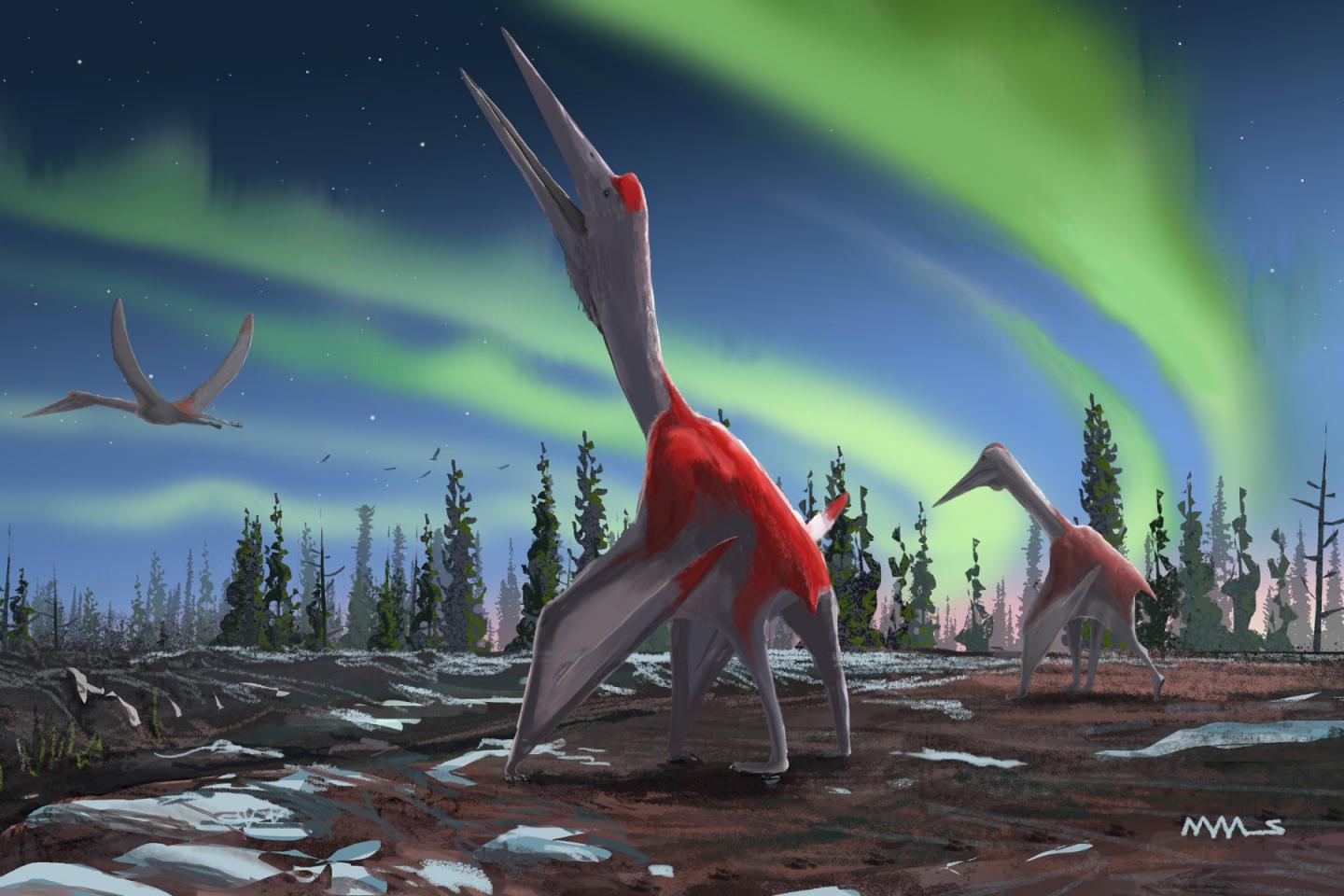
Scientists discover secret of the largest flying animals to have ever lived
Your support helps us to tell the story
Our mission is to deliver unbiased, fact-based reporting that holds power to account and exposes the truth.
Whether $5 or $50, every contribution counts.
Support us to deliver journalism without an agenda.

Scientists have celebrated a surprising discovery about pterosaurs – the largest flying animals to have ever lived.
The ancient reptiles were once tiny tree-climbers but, over time, evolved to have wingspans of up to 10 metres long – similar to small planes.
Pterosaurs are the largest flying animals to have ever lived but in a “surprising twist”, scientists have have found their ability to walk on ground is what helped them grow to enormous sizes.
Researchers at the University of Leicester now believe pterosaurs became giants, weighing up to 250kg (550lbs), because they went through evolutionary changes that made their hands and feet look much more like those of ground-dwelling animals.
These adaptations opened up access to a wider range of foods which enabled these creatures to become towering titans, the team said.
Dr David Unwin, from the University of Leicester, said that after being “freed from the constraints of climbing”, more advanced pterosaurs were able to “grow to enormous sizes, with some species becoming true giants”.

Pterosaurs were close cousins of dinosaurs that lived between 253 to 66 million years ago, during the Mesozoic era.
These animals were the first vertebrates to evolve flight – tens of millions of years before birds or bats – but how they became the largest flying animals to ever exist has puzzled palaeontologists.
To understand more, the researchers from University of Leicester’s Centre for Palaeobiology and Biosphere Evolution examined the hands and feet of pterosaurs from around the world and across their entire evolutionary history.
In what the researchers describe as a “surprising twist”, they found later pterosaurs were not just confined to life in the skies but were also well adapted to life on land.
For example, the researchers said, these creatures evolved to have hundreds of fine, needle-like teeth that were used for filter-feeding, much like modern-day flamingos.
These “bizarre” adaptations meant pterosaurs were able to avoid competition for food from dinosaurs and another animals that inhabited the ground, they added.
The team found that in early pterosaurs, the bones in the hands and feet were ideal for tree climbing – short at the base and elongated at the tips, ending in large, curved claws.
This is similar to those found in climbing lizards and birds such as woodpeckers today, the researchers said.
In more advanced pterosaurs it was the opposite. The bones at the base of their fingers and toes were much longer, while those closer to the tips were shorter, suggesting the creatures were “better adapted for walking rather than climbing”.

Dr Unwin also said that in early pterosaurs, the hind limbs were connected by a membrane “which severely impeded walking and running”.
He added: “In later, more advanced pterosaurs, this membrane became separated along the midline, allowing each hind limb to move independently.
“This was a key innovation that, combined with changes to their hands and feet, greatly improved pterosaurs’ mobility on the ground.”
Lead author Robert Smyth, a doctoral researcher at the Centre for Palaeobiology and Biosphere Evolution, said: “That pterosaurs could fly is only one part of their story.
“By exploring how they lived in the trees or on the ground, we can begin to understand the roles that they played in ancient ecosystems.”



